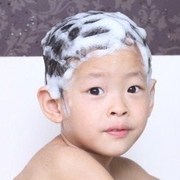 iStockphoto/Thinkstock
iStockphoto/Thinkstock
Lindane is an organochlorine insecticide that has been in use for over 50 years. It is the active ingredient in a shampoo that treats lice and scabies, used as a second line treatment.
However, lindane is also known to be a neurotoxin that can affect the liver and kidneys. Other side effects range from skin irritation and dizziness to seizures and even death.
The EPA (Environmental Protection Agency) banned its use in agriculture in 2006 but that has had no bearing on the pharmaceutical use of lindane, which is governed by the FDA (U.S. Food and Drug Administration).
Congressman Ed Makey, a Massachusetts democrat, wrote a letter May 31, 2012 to the FDA asking them to halt the use of lindane in shampoos that are used to treat head lice on children. He pointed out that children are more susceptible to the effects, especially if parents become overly zealous in their attempts to eradicate the lice or scabies.
The American Academy of Pediatrics recommends 1 percent permethrin lotion as an initial treatment for most head lice infestations with a second application 7‑10 days after the first.
The CDC (Center for Disease Control and Prevention) and the FDA recommend other formulations containing pyrethrins, prescription malathion or benzyl alcohol lotions as first line treatment for lice. These chemicals also have their own risk of use.
Alternately, there are other products on the market that can be tried to remove lice such as mechanical removal with a nit comb, cetaphil dried with a hair dryer, and various other nontoxic agents, as a way to smother the lice. These techniques only have varying levels of success.
Makey’s letter also pointed out that lice and scabies have become increasing resistant to lindane due to widespread use. “Studies of lindane show that it only kills 50-70% of lice eggs”.
More than 160 countries have banned the use of lindane due to concerns of neurotoxic dangers. California banned the use of lindane in pharmaceutical use 10 years ago due to water contamination concerns and its potential effects on children.
Several groups have also declared that lindane may be carcinogenic, including the International Agency for Research on Cancer (IARC) reported Medpage today.
“Given the scientific evidence on the toxicity of lindane, its ineffectiveness as a lice and scabies treatment and the ability of this chemical to enter into US drinking water supplies despite its removal as a viable pesticide by the EPA, there is simply no basis for FDA’s decision to continue to allow the use of this substance for head lice and scabies treatment,” Markey wrote to the FDA.
Makey’s letter addressed eight points to be answered by the FDA.
He questioned why the FDA still permits a chemical to be used that the EPA removed from registered use. He wondered what long term health implications the FDA has reviewed about lindane. And he asked why the FDA continues to think lindane has a benefit when studies show its decreased efficacy. Makey also addressed environmental concerns of it being poured down drains.
Sidney Wolfe, MD of the consumer and health advocacy group Public Citizen stated it succinctly to Medpage today.
"It's inexcusable that there's such a double standard. It's banned by the EPA, yet it's allowed by the FDA. We shouldn't be selling potent toxins that are too dangerous to be used as pesticides."
Sources:
Letter from Congressman Makey to Margaret Hamburg Commissioner U.S. Food and Drug Administration. Retrieved June 2, 2012.
http://markey.house.gov/sites/markey.house.gov/files/documents/05-31-12%...
FDA Asked To Ban Lice Shampoo For Kids By Ed Silverman June 1st, 2012. Retrieved June 2, 2012. http://www.pharmalot.com
Trying to Keep Ahead of Lice: A Therapeutic Challenge: Non-neurotoxic Agents. Retrieved June 2, 2012. http://www.skintherapyletter.com/2006/11.10/1.html
FDA Asked to Take Ban Use of Pesticide for Head Lice. Retrieved June 2, 2012. http://www.medpagetoday.com/PublicHealthPolicy/PublicHealth/33032
AAP Offers Updated Guidance on Treating Head Lice 6/26/2010. American Academy of Pediatrics. Retrieved June 2, 2012. http://pediatrics.aappublications.org/content/110/3/638.full.html
Michele is an R.N. freelance writer with a special interest in woman’s healthcare and quality of care issues. Other articles by Michele are at www.helium.com/users/487540/show_articles
Edited by Jody Smith



Add a CommentComments
There are no comments yet. Be the first one and get the conversation started!